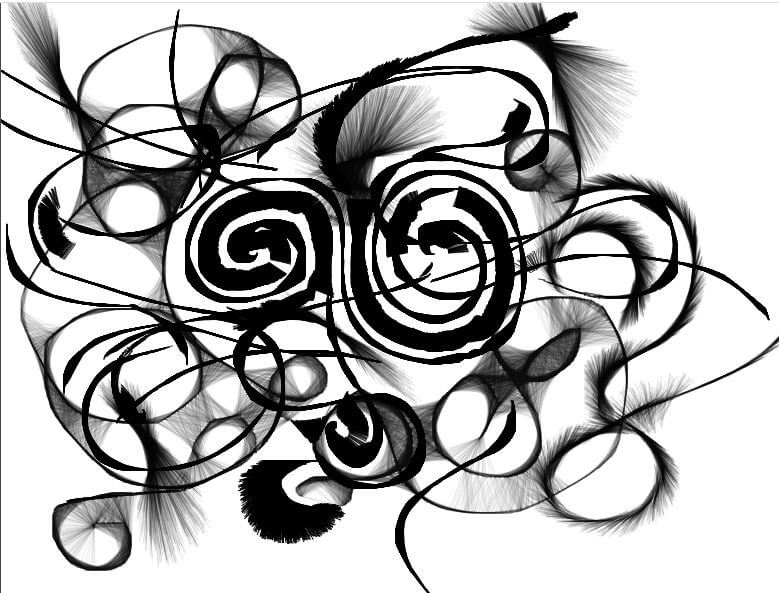You are probably here because you are somewhere on your personal journey to practicing mindfulness.
Maybe you are at the beginning, getting ready to start a habit, or perhaps you are an experienced mindfulness practitioner looking for a new tool.
Regardless of where you are on your journey, we hope you will find something useful here, as we explain how to use the act of journaling as a way of practicing mindfulness.
Mindfulness has become a buzzword for good reason because it has so many benefits. First, it is so easy to implement. It is low cost, can be practiced anywhere, and only requires your time and consistency.
Despite the ease of implementing mindfulness, like any new habit, it can be overwhelming for beginners. Where should you start? Should you implement a daily meditation session, mindful eating, mindful exercise, or mindful walking? The answer is you should start small.
Probably one of the easiest ways to implement mindfulness is through journaling. And this post will help you start this new practice.
This post is suitable for beginners and current practitioners of mindfulness. If you’re ready, dust off your notebook, find a pen and a quiet, sunny spot, and let’s begin!
Before you read on, we thought you might like to download our three Mindfulness Exercises for free. These science-based, comprehensive exercises will help you cultivate a sense of inner peace throughout your daily life and will also give you tools to enhance the mindfulness of your clients, students, or employees.
What Is Journaling in Mindfulness?
Brief definition of mindfulness
Mindfulness describes a practice of focused attention and awareness. Kabat-Zinn (2003, p. 145) defines mindfulness as:
the awareness that emerges through paying attention on purpose, in the present moment, and nonjudgmentally to the unfolding of experience moment by moment.
There are many ways that we can practice mindfulness: meditation, mindful eating, mindful running, breathing exercises, and body scans. Another method is through journaling.
Why consider journaling?
Journaling is a much easier way to start implementing mindfulness than other techniques, such as meditation, for example. Besides the ease of starting a journaling habit, it also has positive benefits, enhancing physical health (Pennebaker, 1997) and improved academic performance (Scherer, 2002).
As an activity, journaling shares some characteristics of mindfulness (Khramtsova & Glascock, 2010):
- It helps sharpen your focus.
- It turns your attention inward.
- It can be used to increase positive thoughts.
- It can be used to decrease negative thoughts.
- It is easy to implement.
- It has little or no cost.
- It can be performed anywhere.
- It can be performed at any age.
Journaling and mindfulness
Several studies that used a mindfulness intervention have incorporated some form of journaling as a part of the mindfulness repertoire. In some instances, the type of journaling has been described as:
- Gratitude journaling (e.g., Beck & Verticchio, 2018; Emmons & McCullough, 2003; Khramtsova & Glascock, 2010; Seligman, Steen, Park, & Peterson, 2005)
- Reappraisal journaling (e.g., Khramtsova & Glascock, 2010)
- Counseling journaling (e.g., Beck & Verticchio, 2018)
- Self-compassion journal (e.g., Germer, 2009)
- Reflective journaling. (Beck & Verticchio, 2014; Bohecker, Wathen, Wells, Salazar, & Vereen, 2014)
- Expressive writing (Pennebaker & Smyth, 2016)
Where mindfulness was used as an intervention method, the experimental group (i.e., the one who received the mindfulness training) reliably showed higher levels of mindfulness, fewer depressive symptoms, and lower anxiety.
Does the journaling format make a difference?
Currently, there is very little empirical evidence that one type of journaling is better than another.
Some studies might include more than one type of journaling format in their mindfulness intervention, which makes it difficult to isolate the individual effects of each journaling format. For example, Khramtsova and Glascock (2010) included reappraisal and gratitude journaling in their mindfulness intervention.
The experimental group showed higher levels of mindfulness compared to the control group, but it is unclear how each type of journaling contributed uniquely to mindfulness.
Beck and Verticchio (2018) recruited participants and assigned them to one of two groups: gratitude journaling or counseling journaling. They aimed to determine which type of journaling had the most significant effect on the scores of the Self-Compassion Scale.
After a set number of weeks, they found both groups had improved upon the subscales of the Self-Compassion Scale, suggesting that both types of journaling are effective. Surprisingly, however, the counseling journaling group had the most significant improvement on the Self-Compassion Scale, whereas the gratitude journaling group had no improvement.
However, these results should be interpreted tentatively, because (1) the sample sizes are small, (2) the results have not been replicated yet, and (3) the two groups differed significantly from each other before the intervention took place (suggesting that the two groups are not actually comparable).
So what now?
A great deal of research with a two-group design has shown that participants who practice mindfulness report more mindfulness and fewer depressive symptoms compared to a control group, regardless of the type of journaling method used in the mindfulness intervention. The majority of mindfulness interventions included gratitude journaling.
However, journaling in general should be beneficial. Part of the reason for this might be because writing is a very focused action, is slower than thinking, and requires attention. Knowing this, let’s look at examples of how journaling is used in mindfulness.
3 Examples
 Example 1: Gratitude journaling
Example 1: Gratitude journaling
In published manuscripts where journaling was included in the mindfulness interventions, most have used a gratitude journal format.
Typically the instructions for a gratitude journal are as follows:
There are many things in our lives, both large and small, that we might be grateful about. Think back over the past week and write down on the lines below up to five things in your life that you are grateful or thankful for.
If this were my journal, for example, I would list the following five things I am grateful for:
- I am healthy enough to run.
- I adopted two little dogs who make me laugh.
- I am reading an interesting book.
- My work is difficult, and this stimulates me.
- We bought a heater so that our house isn’t cold.
The items that you are grateful for can be inanimate or animate, material or abstract, as general or specific as you want. The point is that you have to find things that you are grateful for.
Example 2: Exercises to check in
Another useful way to use journaling is to check in. By ‘check in,’ I mean that you take a moment to check your progress on a task/goal, your feelings, and reflect on what has happened. One way that I like to use a check-in is to specify my goals for the week in my journal, and then at the end of each day, I reflect on how much progress I have made toward that goal.
For example, if I am trying to remember to express gratitude, then I list that as my goal, and I will consciously reflect on finding opportunities to complete this task. I will then list these opportunities and describe them in my journal.
I also like to jot down hurdles I encountered and describe how I overcame them or whether there is a silver lining to the challenge.
As an example, I often feel anxious when I have lots of tasks to complete and don’t want to forget about them. Although this is a stressful feeling, I have learned that writing down the list and prioritizing the items is very useful. Now I know that the sense of racing thoughts might be a sign that I have too much work, and I have learned a new technique (list and prioritize) to manage the tasks better.
Example 3: Doodling and coloring
Although not typically considered a form of journaling, doodling and mindfulness coloring are useful techniques that can easily be done in a journal. You could consider two different methods.
1. Doodling
Take a fine black pen and start either in the middle of the page and work your way out, or start in one corner and move to the opposite diagonal corner. While doodling, you can reflect on the same gratitude instruction used above, or you can focus on the doodles and making the lines connect. There is no wrong option here.

2. Coloring
Print out an image, stick in your journal, and color it in, or color your doodle. Good images to color are those that are very detailed with many empty compartments.
Mandalas are an excellent example of intricate images to color. If you feel very adventurous, you could try to draw your own mandala to color.

39 Useful Prompts and Exercises
To help you with your journaling journey, we’ve provided a list of prompts and exercises that you could use. Pick one at random, or assign different exercises for different days. If you have any additional prompts or activities that you like to use, then share them with us in the comments section below.
12 Monthly Themes
Assign a theme for each month to focus on in your journal. For example, January could be a month of mindful financial expenditure (a necessary exercise for most of us after the holiday season). Then, when journaling on a day in January, you can reflect on any instances when you were tempted to purchase items unnecessarily, but didn’t.
Here are some other examples of monthly themes:
- Mindful financial expenditure – January
- Expressing love – February
- Mindfulness at work – March
- Thinking before speaking – April
- Mindful eating exercises – May
- Expressing gratitude to loved ones – June
- Your meditation journey – July
- Checking in with yourself – August
- Mindful meditation – September
- Mindful gift giving – October
- Mindful thinking – November
- Mindful holidays – December
11 Gratitude prompts
Any of the following prompts can be used when journaling (adapted from Davenport & Scott, 2018). The primary theme of these prompts is to focus on gratitude.
Each prompt is written in the first-person so can express and own the thought. For each prompt, think of 3–5 items and describe why you feel grateful.
- I think of the work that I perform in my career or at home. I reflect on how it affects my life, including my physical and emotional wellbeing. With these thoughts in mind, I feel grateful for…
- I think of the people who are important to me. These people are my family and/or my friends. I reflect on how they affect my life and how I feel when I spend time with them. With these thoughts in mind, I am grateful for…
- I am aware of my strengths and skills, which have helped me on my path to where I am today. I feel grateful for…
- I am aware of my interests and passions, which provide me with stimulation and inspire me. I feel grateful for…
- I think of the home that I live in, and I reflect on how it provides my family and me with a safe, secure, stable place for us to live. I feel grateful for…
- I am grateful for the food that I have eaten in my life. I reflect on the meals that I have shared with friends, families, and colleagues. I am grateful for…
- I am mindful of the gifts that I received for special holidays and my birthday. I am grateful for…
- I think of the area where I live. I think of the shops where we buy food, the people we have met, and the experiences we have had. I feel grateful for…
- I reflect on my past and all the mentors and teachers who have helped me on my path. I feel grateful for…
- I am mindful of my health and my body. I reflect on the times when I have enjoyed good health. I am grateful for…
- I am mindful of the challenges that I have faced on my journey to where I am now. Without these challenges, I would not be who I am today. I feel grateful for…
9 Daily prompts
Here we provide a list of daily prompts that you can use for your journal. These prompts are not necessarily focused on gratitude but include other positive experiences. These prompts were inspired by Patel (2015).
- Name three thoughts that made you smile today.
- Name three things that challenged you today.
- Name three urges that you resisted today.
- Name three events that made you feel productive today.
- Name three actions that made you feel loved today.
- Name three beautiful things that you heard today.
- Name three experiences that made you feel brave today.
- Name three things that you learned today.
- Name three beautiful things that you saw today.
7 Daily outlines for journaling
Daily journaling can take other formats besides prompts and reflections of gratitude. For example, you could set aside some time at the beginning of the day before work as well as at the end of the day after work to journal.
Here are some prompts for the beginning of the day:
- What am I looking forward to today?
- What might challenge me today?
- What will I do if I feel anxious/stressed/worried today?
Here are some prompts that can be used for the end of the day:
- What positive things happened today?
- What, if anything, went wrong today?
- What will I do differently tomorrow?
- What am I grateful for today?
These same prompts could also be used for monthly journal outlines. For example, at the start of the month, you could choose a theme and specify three prompts that you will use that month to guide you.
Our 5 Best Mindfulness Tools
 Tools to start with
Tools to start with
Before you start journaling, you need the following items:
- A journal
- A pen (or pens)
- A comfy spot
- Time
You do not need an expensive journal to journal.
I have a simple journal that I bought on sale, and I bought a set of pens from the local discount store. Because I am left-handed, I chose a journal that was easy for me to write in (e.g., I don’t like ring spines because my hand always hits it), and I must admit that I have a soft spot for hardcover.
With these two constraints, I paid a small amount for my journaling items. You might ask whether using an electronic device counts as journaling. In my opinion, no, it does not. This is because writing by hand requires more attention than typing at the computer or on a device, where there are added distractions like email, music, and social media.
I like to journal at our breakfast nook, which is near a window. I cordoned off some time in the morning and the evening to journal, and I have scheduled this time in my calendar. The time isn’t long, between 5 and 10 minutes. But what is essential is that the time is booked and unmovable. My day doesn’t start or end until I have completed these two tasks.
Our best tools
Now that you’re ready to start journaling, where should you start?
At PositivePsychology.com, we have excellent resources for you to use. You can use our Gratitude Journal Worksheet to start your journaling practice. The exercises in this sheet can be easily adapted for monthly and daily journaling habits.
If you want to try your hand at some self-affirmation journaling, then try our I’m Great Because… Worksheet. This worksheet would be a good exercise to complete at the end of every week or month, or you can use one statement as your theme for the month.
When journaling about your progress this month, you can use our Personal Goal Progress Review. In this task, you will be given prompts about your goals and daily activities. The prompts serve as beneficial reflection exercises.
Along with the tools listed above, you could use our Three Good Things’ exercises as a way to end your day or week. These exercises will help you reflect on positive events you experienced over the last week or month.
Our ultimate tool is our Little Gratitude Habits. For each week, choose one gratitude habit to complete. At the end of the week, document the habit, how you satisfied it, and how it made you feel. Pick another habit for the next week.
A Take-Home Message
Journaling is a very powerful tool that is often used as part of mindfulness interventions.
Journaling is powerful because it is cheap, easy to implement, can be performed anywhere and by anyone.
There isn’t only one type of journaling; instead, there are multiple formats that you can follow. Regardless of the format that you follow, you must take the time to journal regularly and meaningfully. The journal is your personal expression of your feelings and thoughts.
We hope you enjoyed reading this article. Don’t forget to download our three Mindfulness Exercises for free.
If you wish to learn even more, Mindfulness X© is our eight-module mindfulness training package designed for practitioners. It contains all the materials you’ll need to not only enhance your mindfulness skills, but also learn how to deliver a science-based mindfulness training to clients, students, or employees.

